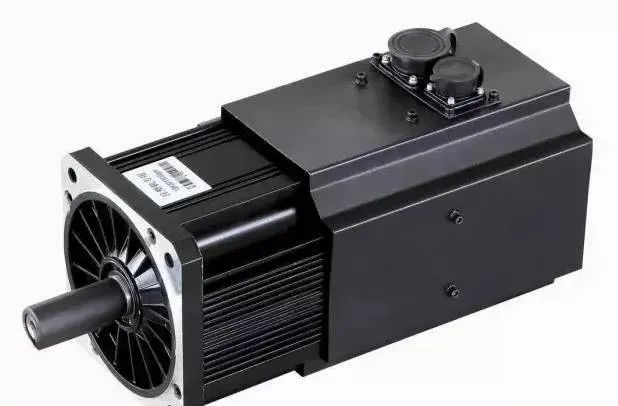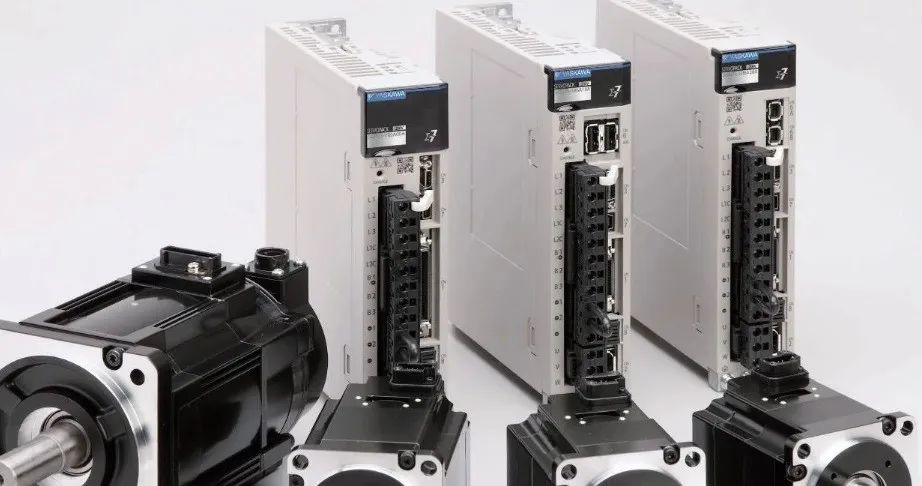Servo motor testing process, how to judge the quality and failure
"Servo" - the word comes from the Greek word "slave". People want to use the "servo mechanism" as a handy taming tool, which can act according to the requirements of the control signal. Before the signal arrives, the rotor remains stationary; after the signal arrives, the rotor rotates immediately; when the signal disappears, the rotor can immediately stop spinning on its own. Because of its "servo" performance, it got its name - servo system.
The main task of the servo is to amplify, transform and regulate the power according to the requirements of the control command, so that the torque, speed and position output by the drive device can be controlled very flexibly and conveniently. The servo system must have basic properties such as good controllability, high stability and strong adaptability. To explain, good controllability means that it can stop immediately after the signal disappears; high stability means that the torque decreases evenly as the speed increases; strong adaptability means fast response, sensitivity, and good sound quality.
The first step is to test the motor first. There is no need to connect any circuit. Short-circuit any two of the three wires of the motor together. Turn the motor shaft by hand. If you feel resistance, then it is OK.
The second step is to connect the driver to the power supply according to the drawing (for example, use a voltage regulator to adjust from 100V to 220V, fearing that the driver is 100V), power on, the driver is normal, and an error message is displayed. According to the manual, the encoder is displayed. There is a faulty error. This is normal. The encoder has not been connected yet.
The third step is to connect the encoder and turn it on again. No errors will be displayed.
Step 4: Set up the drive according to the instructions. For example, after setting the "speed control mode" and then turning the potentiometer, the motor does not rotate. According to the instructions in the manual, adjust the toggle switch. After finally turning "Servo-ON", the motor locks suddenly, OK! Then turn the potentiometer to make the SPR/TRQR input pin have voltage, good! The motor turned. The number of revolutions on the servo drive reaches 1000, 2000, 3000 and finally more than 4000 revolutions. The instruction manual recommends 3,000 rpm, and there may be some problems at higher speeds.
The fifth step is to reset the servo driver and change it to "position control mode". Connect the motion control card (or use MACH3 to connect to the computer parallel port) to the pulse and direction interface, and the motor also rotates! According to the output rate of 500Kpps, 3000rpm is displayed on the driver. Both forward and reverse directions can be controlled by yourself.
Finally, adjust the motion control card and the small connection board. The LED array on the board is for testing the output, the socket is for connecting the two-phase encoder, the other socket is for outputting pulse/direction, and the switches and buttons are for testing the I/O input.

The method to check the quality of servo motor is as follows:
1. When measuring the current with a multimeter, the three-phase unbalance rate should not be greater than 10%;
2. Use a megger to measure insulation, and each phase to ground and phase to phase should be no less than 0.5 MB;
3. Measure the DC resistance of the bridge, and the unbalance rate of the three phases should not be greater than 2%; that is, first use a multimeter to measure the voltage and resistance (without a megger), first select two phases from the three UVW phases on the motor power supply side, and measure Check whether the voltage at both ends is 380v (it's okay if it's higher than 380V). This is caused by sometimes unstable voltage in the power grid. Measure the UV, VW, and UW three-phase power supplies in sequence. After the power side measurement is completed, measure the load side and measure whether the resistances of the three phases uv, vw, and uw are the same or have little difference. If it is found that one pair of resistances deviates greatly, the motor may be burned out. Finally, measure whether the resistance of one of the phases to ground is 0, so that you can determine whether the motor is burned out. (The inside of the motor adopts the △ connection method, and the internal parts are connected together, so only one phase can be measured)
Commonly used inspection methods:
① Check the power line voltage;
② Check switches and circuits;
③ Check whether the motor rotates flexibly and remove the load test;
④ Check whether the motor is broken.
Servo motor refers to the engine that controls the operation of mechanical components in the servo system. It is an indirect transmission device that assists the motor.

1. The servo motor cannot rotate after power is supplied, but there is no abnormal sound, odor or smoke.
1. Cause of failure
① The power supply is not connected (at least two phases are not connected);
② The fuse is blown (at least two phases are blown);
③ The overcurrent relay is adjusted too small;
④ The wiring of the control equipment is wrong.
2. Troubleshooting
① Check the power circuit switch, fuse, and junction box for breakpoints and repair them;
② Check the fuse model and the reason for the fuse, and replace it with a new one;
③ Adjust the relay setting value to match the motor;
④ Correct the wiring;
2. The servo motor does not rotate and makes a buzzing sound after power is turned on.
1. Cause of failure
① The rotor winding has an open circuit (one phase is disconnected) or one phase of the power supply loses power;
② The start and end of the winding lead wire are connected incorrectly or the internal connections of the winding are reversed;
③ The contacts of the power circuit are loose and the contact resistance is high;
④ The motor load is too large or the rotor is stuck;
⑤ The power supply voltage is too low;
⑥ The assembly of the small motor is too tight or the grease in the bearing is too hard;
⑦The bearing is stuck.
2. Troubleshooting
① Identify breakpoints and fix them;
② Check the winding polarity; determine whether the winding ends are correct;
③ Tighten the loose wiring screws, use a multimeter to determine whether each connector is falsely connected, and repair it;
④ Reduce load or detect and eliminate mechanical faults,
⑤ Check whether the specified surface connection method is incorrectly connected; whether the voltage drop is too large due to the power wire being too thin, correct it.
⑥ Reassemble to make it flexible; replace with qualified grease;
⑦ Repair the bearing.
3. It is difficult to start the servo motor. At rated load, the motor speed is much lower than the rated speed.
1. Cause of failure
① The power supply voltage is too low;
② The motor is connected incorrectly by surface connection method;
③ The rotor is welded or broken;
④ The rotor local coil is connected incorrectly or reversely;
⑤ Too many turns are added when repairing the motor winding;
⑥ The motor is overloaded.
2. Troubleshooting
① Measure the power supply voltage and try to improve it;
② Correct the connection method;
③ Check open welding and break points and repair them;
④ Identify misconnections and correct them;
⑤ Restore the correct number of turns;
⑥Load reduction.
4. The no-load current of the servo motor is unbalanced and the three-phase phase difference is large.
1. Cause of failure
① The winding head and tail ends are wrongly connected;
② Unbalanced power supply voltage;
③ The winding has faults such as inter-turn short circuit and coil reverse connection.
2. Troubleshooting
① Check and correct;
② Measure the power supply voltage and try to eliminate the imbalance;
③ Eliminate winding faults.
5. The servo motor makes abnormal noises when running.
1. Cause of failure
① Bearing wear or foreign matter such as sand in the oil;
② The rotor core is loose;
③ The bearing is short of oil;
④ The power supply voltage is too high or unbalanced.
2. Troubleshooting
① Replace or clean the bearing;
② Overhaul the rotor core;
③ Come on;
④ Check and adjust the power supply voltage.
6. The vibration of the servo motor is relatively large during operation
1. Cause of failure
① Excessive bearing clearance due to wear;
② Uneven air gap;
③ The rotor is unbalanced;
④ The rotating shaft is bent;
⑤ The coaxiality of the coupling (pulley) is too low.
2. Troubleshooting
① Overhaul the bearing and replace it if necessary;
② Adjust the air gap to make it even;
③ Calibrate the dynamic balance of the rotor;
④ Align the shaft;
⑤ Recalibrate to make it meet the regulations.
Seven, servo motor bearing overheating
1. Cause of failure
① Too much or too little grease;
② The oil quality is not good and contains impurities;
③ Improper cooperation between the bearing and the journal or end cover (too loose or too tight);
④ The inner hole of the bearing is eccentric and rubs against the shaft;
⑤ The motor end cover or bearing cover is not installed flat;
⑥ The coupling between the motor and the load is not corrected, or the belt is too tight;
⑦ The bearing clearance is too large or too small;
⑧ The motor shaft is bent.
2. Troubleshooting
① Add grease according to the regulations (1/3-2/3 of the volume);
② Replace with clean grease;
③ If it is too loose, it can be repaired with adhesive, if it is too tight, it should be turned, and the inner hole of the journal or end cover should be ground to make it suitable;
④ Repair the bearing cap to eliminate friction spots;
⑤ Reassembly;
⑥ Recalibrate and adjust the belt tension;
⑦ Replace with new bearings;
⑧ Correct the motor shaft or replace the rotor.
8. The servo motor overheats or even smokes.
1. Cause of failure
① The power supply voltage is too high;
② The power supply voltage is too low, the motor is running with rated load, and the current is too high to cause the winding to heat up;
③ When repairing and dismantling the winding, improper hot dismantling method is used to burn the iron core;
④ The motor is overloaded or starts frequently;
⑤ The motor is missing a phase and runs on two phases;
⑥ After rewinding, the winding is not fully dipped in paint;
⑦ The ambient temperature is high, the surface of the motor is dirty, or the ventilation channel is blocked.
2. Troubleshooting
① Reduce the power supply voltage (such as adjusting the tap of the power supply transformer);
② Increase the power supply voltage or replace the thick power supply wire;
③ Inspect the iron core and troubleshoot;
④ Load reduction; control starting according to specified times;
⑤Restore three-phase operation;
⑥ Adopt secondary dipping and vacuum dipping processes;
⑦ Clean the motor, improve the ambient temperature, and adopt cooling measures.



























 XINDA
XINDA